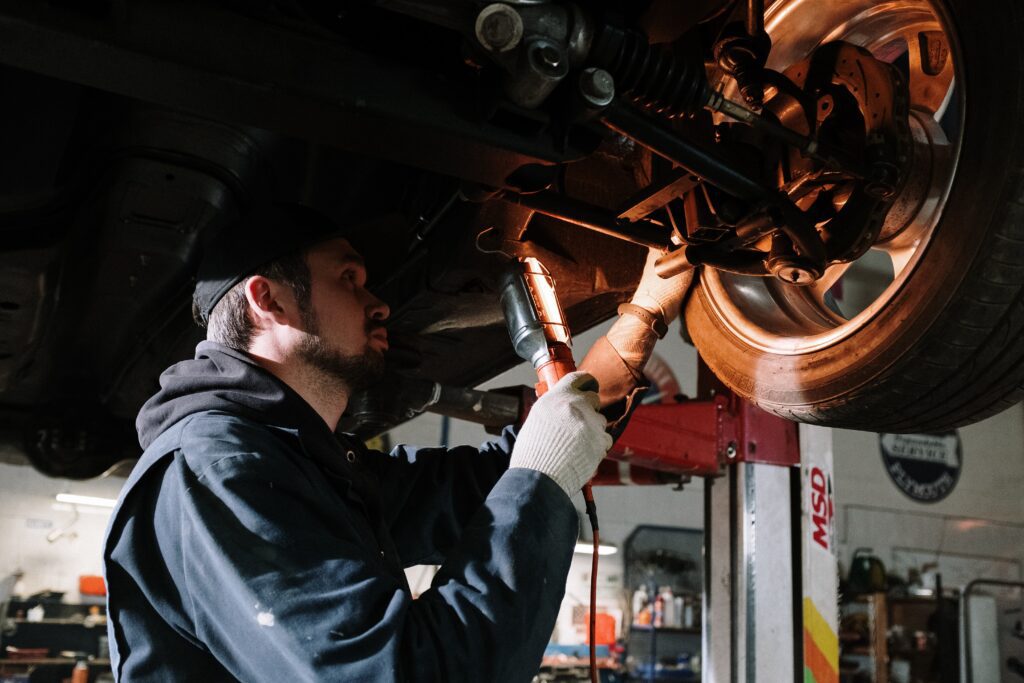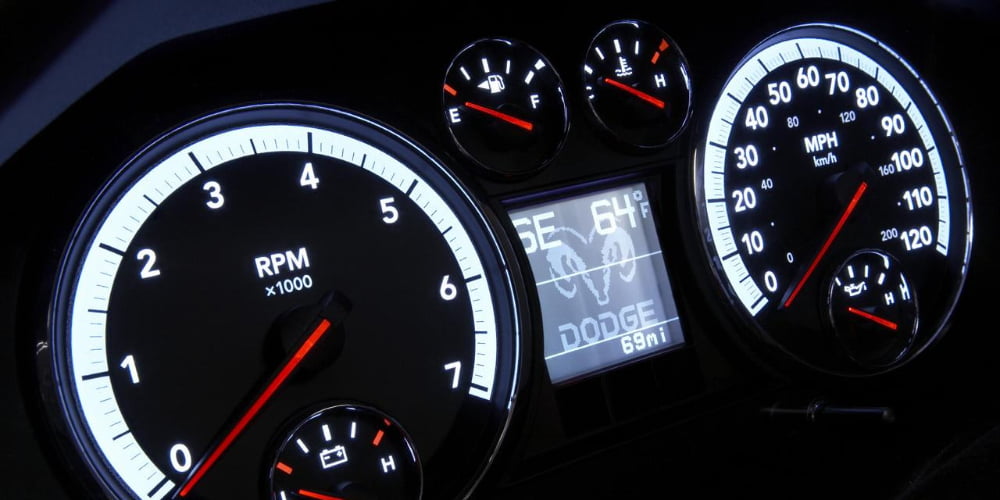Ultimate Guide to Dodge Check Engine Light Codes: Causes, Diagnosis, and Effective Fixes for Your Vehicle
Are you tired of seeing that dreaded Check Engine Light (CEL) on your Dodge vehicle? If you’re like most Dodge owners, you probably panic at the sight of the CEL, especially if you’re not sure what’s causing it. Fear not, as we’re here to help you understand the Dodge Check Engine Light Codes and how to diagnose and fix them.

Introduction: Understanding the Check Engine Light
The Check Engine Light is part of your Dodge’s On-Board Diagnostic (OBD) system, which constantly monitors the engine and emissions system’s performance. When a fault is detected, the OBD system records a code and illuminates the CEL on your dashboard.
The codes stored by the OBD system are standardized across all vehicle brands and can be read using a scan tool. Knowing what the codes mean can help you diagnose the problem and fix it before it causes further damage to your vehicle.

Common Causes of Dodge Check Engine Light Codes
The reasons why your Dodge Check Engine Light turns on can vary from simple issues to more complex problems. Here are some common causes of Dodge Check Engine Light Codes:
1. Faulty Oxygen Sensor
The oxygen sensor is an essential part of your Dodge’s emission system that monitors the exhaust’s oxygen levels. A faulty oxygen sensor can cause your engine to run inefficiently, increase emissions, and reduce fuel economy. If the CEL is on due to a bad oxygen sensor, you may notice a decrease in engine performance.
2. Loose or Faulty Gas Cap
A loose or faulty gas cap is one of the most common reasons for a Check Engine Light. If your gas cap isn’t tight enough or has a crack, it can allow fuel vapors to escape, triggering the CEL. A faulty gas cap can also cause your Dodge to fail an emissions test.
3. Malfunctioning Ignition Coil
The ignition coil is responsible for providing the spark that ignites the fuel in your engine’s cylinders. If it fails, you may experience misfires, engine stalling, and poor performance. A malfunctioning ignition coil can also damage your vehicle’s catalytic converter, which can be costly to replace.
4. Failed Mass Airflow Sensor
The mass airflow sensor (MAF) measures the amount of air entering the engine, which is used to calculate the fuel needed to maintain the correct air/fuel ratio. A failed MAF can cause your engine to run rich or lean, leading to poor performance and reduced fuel economy.
5. Clogged Catalytic Converter
The catalytic converter is responsible for reducing harmful emissions by converting them into less harmful gases. Over time, the converter can become clogged with debris, causing reduced engine performance and increased emissions. A clogged catalytic converter can also cause the Check Engine Light to turn on.

Diagnosing Dodge Check Engine Light Codes
Diagnosing Dodge Check Engine Light Codes can be a daunting task, especially if you’re not familiar with your vehicle’s systems. However, with the right tools and knowledge, you can diagnose and fix the problem yourself.
1. Use a Scan Tool
The first step in diagnosing a Check Engine Light is to use a scan tool to read the codes stored by the OBD system. A scan tool can help you identify the code and provide a description of the problem.
2. Research the Code
Once you have the code, you can research it to understand what it means and what systems it relates to. Many online resources can help you understand the code and provide possible fixes.
3. Inspect the Affected Systems
After identifying the system related to the code, you’ll need to inspect the affected systems. For example, if the code relates to the oxygen sensor, you may need to inspect the sensor’s wiring and connections. If the code relates to the catalytic converter, you may need to inspect the exhaust system for any blockages or damage.
4. Perform Repairs or Replacements
Once you’ve identified the problem, you can perform the necessary repairs or replacements. This may involve replacing a faulty component, repairing damaged wiring, or cleaning a clogged system.
Fixing Dodge Check Engine Light Codes
Fixing Dodge Check Engine Light Codes can be a simple or complex process, depending on the problem’s severity. Here are some common fixes for Dodge Check Engine Light Codes:
1. Tighten or Replace Gas Cap
If the Check Engine Light is on due to a loose or faulty gas cap, you can tighten the cap or replace it with a new one. This is a simple and inexpensive fix that can save you money on potential emissions tests.
2. Replace Oxygen Sensor
If the Check Engine Light is on due to a faulty oxygen sensor, you’ll need to replace the sensor. Oxygen sensors can wear out over time and cause engine performance issues. Replacing the sensor can improve fuel economy and reduce emissions.
3. Replace Ignition Coil
If the Check Engine Light is on due to a malfunctioning ignition coil, you’ll need to replace the coil. Ignition coils can fail due to wear and tear, causing engine misfires and poor performance. Replacing the coil can improve engine performance and prevent damage to the catalytic converter.
4. Clean or Replace Mass Airflow Sensor
If the Check Engine Light is on due to a failed mass airflow sensor, you can clean the sensor or replace it with a new one. Mass airflow sensors can become dirty or damaged over time, causing engine performance issues. Cleaning or replacing the sensor can improve fuel economy and engine performance.
5. Replace Catalytic Converter
If the Check Engine Light is on due to a clogged catalytic converter, you’ll need to replace the converter. A clogged converter can cause reduced engine performance and increased emissions. Replacing the converter can improve engine performance and reduce emissions.

FAQs
How much does it cost to diagnose a Check Engine Light on a Dodge?
Can a Check Engine Light reset itself?
Can I drive my Dodge with the Check Engine Light on?
Can a bad battery cause a Check Engine Light to turn on?
Can a Check Engine Light indicate a problem with the transmission?
Can I ignore a Check Engine Light on my Dodge?
Conclusion: Fixing Dodge Check Engine Light Codes
The Dodge Check Engine Light Codes can be frustrating, but understanding them can help you diagnose and fix the problem. From a faulty gas cap to a clogged catalytic converter, there are several common causes of the Check Engine Light.
Diagnosing and fixing the problem can be simple or complex, depending on the severity of the issue. Whether you need to replace a faulty component or clean a clogged system, fixing the problem can improve fuel economy, engine performance, and reduce emissions.
Don’t ignore the Check Engine Light on your Dodge, as it could lead to costly repairs or safety concerns. Use a scan tool to diagnose the problem, research the code, and inspect the affected systems. Then, perform the necessary repairs or replacements to fix the problem and keep your Dodge running smoothly.
So, the next time you see the Check Engine Light on your Dodge, don’t panic. Use this guide to help you understand the Dodge Check Engine Light Codes and fix the problem.
Hire a Professional for Expert Advice
If you’re unsure about diagnosing or fixing the problem yourself, consider hiring a professional for expert advice. A certified mechanic can diagnose and fix the problem quickly and effectively, saving you time and money.

